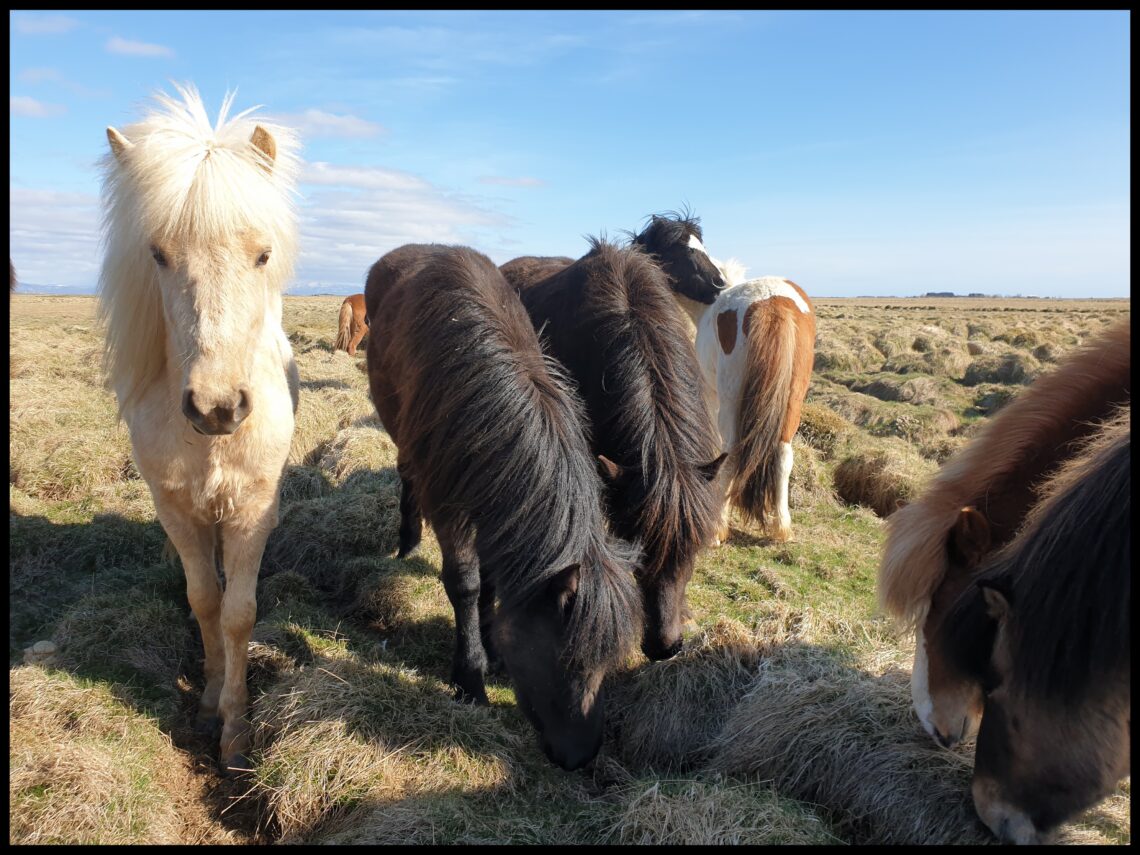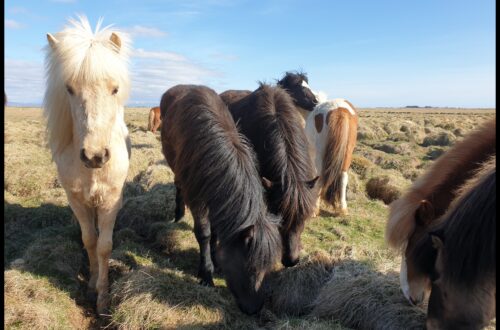
10 facts about Icelandic horses
The Icelandic horses are the pride of the icelanders and they are characterized by some special features.
In Iceland there is only one breed of horses, the Icelandic horse. In the 9th and 10th century, the vikings brought several types of horses from Norway and the British Isles to Iceland, from which the Icelandic horse we know today developed. Since then there has been implemented a total ban on the import of horses in any form. On the one hand, this is to keep the breed pure and, on the other hand, to prevent the spreading of deseases. All Icelandic horses worldwide are listed in the database WorldFengur, so the pedigree of every horse can be verified at all times.
The approximately 370,000 inhabitants of Iceland have around 80,000 horses, they are an essential part of Icelandic culture and society. Rather frowned upon in many countries, horsemeat is very popular in Iceland. The horses have also left their mark in various places in Iceland. According to Norse mythology, the Ásbyrgi Gorge is said to have been created by a hoofprint made by Odin’s eight-legged horse Sleipnir, and place names such as Folaldafoss (“foal waterfall”) or Meradalir (“mare’s valleys”) indicate to the importance of the animals. There is even a university where you can get a bachelor’s degree in horseback riding and teaching
Strictly speaking Icelandic horses are ponies as their average height is under 1.47m (14.4 hh). However, due to their strength and development, they are referred to as horses. Also in the Icelandic language there is only the word “hestur”, which means “horse”. Locals and farmers could get very angry when their proud animals are called “ponies”.
Icelandic horses grow up freely in large herds. Training usually begins when the horse is about four or five years old. They are only fully grown when they are about eight years old. Accordingly, they can also become very old, often well over 30 years.
All horses in Iceland have an owner, they are not wild. Even if it sometimes looks like it because some pastures are extremely large. Many horses also live “semi-wild” in the highlands during the summer months, they are only brought back to the valleys and stables in autumn at big “horse round-ups”.
However, at the end of 2021, a small herd of wild horses was found in the southeast of the island. Apparently, some of their ancestors escaped in the 1960s and their descendants have survived undiscovered to this day. They have since been captured and are being checked for health and their pedigree.
Over 40 colors with up to 100 variations make the Icelandic horse one of the most colorful horse breeds in the world. All colors are allowed and desired, the variety should be preserved. The only color that doesn’t exist is spotted. Some Icelandic horse people even claim to be able to tell a horse’s character by its color.
In addition to the basic gaits walk, trot and galopp/canter, Icelandic horses also have the tölt and some also the (flying) pace. These additional gaits are genetically, shortly after birth Icelandic horses can run around in all four or five gaits. The tölt can be ridden at a wide range of speed, from walking to cantering, while the pace is only ridden at racing speed over short distances.
Icelandic horses are considered to be extremely good-natured and friendly. They are hardy and frugal, independent yet social. They are human-oriented and willing to learn and train. They are calm and relaxed in handling, but also powerful when being ridden and with a lot of willingnes.
On the rugged island, Icelandic horses were used as work animals and means of transport for a long time. The first roads were only built towards the end of the 19th century, and the ring road was only completed in the 1970s. Today, machines and cars have replaced horses in agriculture and travel. However, they have retained one work purpose, namely for the sheep and horse round-ups in the autumn. Otherwise, the animals are mainly used as leisure, family or therapy horses. But there is also a large competition community with specific test fors gaited horses and every two years there are even Icelandic Horse World Championships.
Between 2000 and 3000 horses are exported from Iceland every year, with Germany being the biggest import country, ahead of Sweden and Denmark. These are also the countries with the most Icelandic horses outside of Iceland. There are now almost 5,000 in the USA and even around 200 Icelandic horses each in Australia and New Zealand.


You May Also Like
